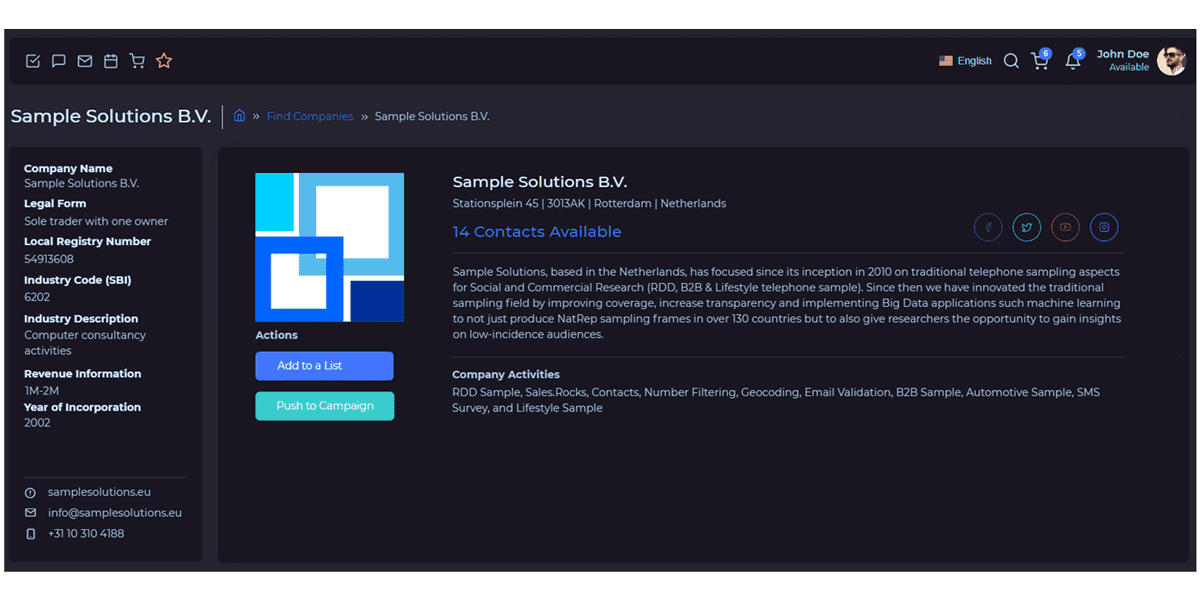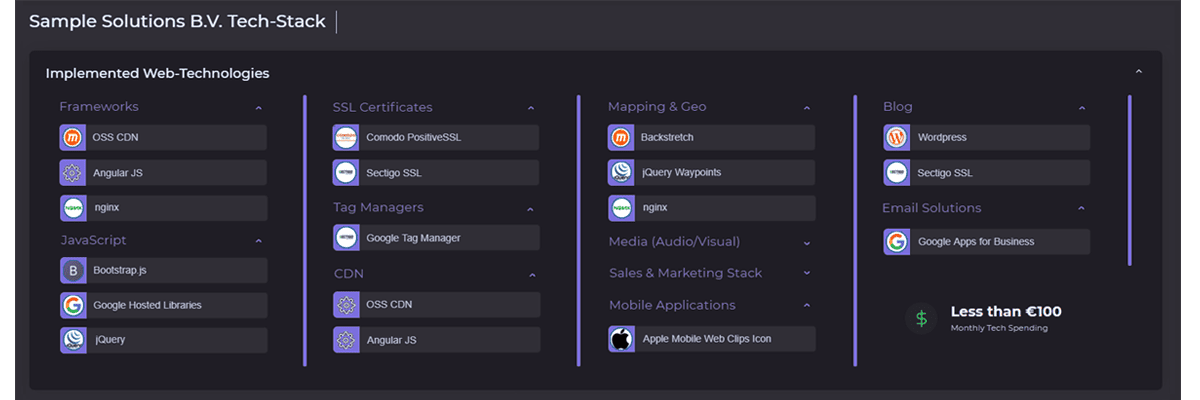Updated on March 29, 2023
Third-party intent data is a powerful resource used by sales teams to identify potential customers who are actively searching for products or services similar to what they offer.
By gathering and analyzing data on a prospect’s online behavior, sales teams can gain valuable insights into their interests and intent to purchase. This allows them to tailor their sales pitch and outreach strategies to better meet the needs of the prospect, increasing the likelihood of a successful conversion.
Third-party intent data is becoming increasingly popular in the sales industry, providing businesses with an assumed competitive edge. But is this intent data everything that we are presented with?
Third-party data providers of intent data are struggling to keep up with the regulations and valuable data they want to provide to their clients.
Let’s see the benefits, but also the potential downfall of intent data provided by third-party providers.
Intent Data Providers
Intent data providers are companies that track and create insights from buyer online behavior to help identify accounts in the market for a certain product or service. The data collected by intent data providers range from first-party and third-party sources to provide a variety of signals about a potential buyer’s journey.
Companies’ marketing channels often collect first-party intent signals that portray how close an account is to initiating a purchase, while third-party data collection services aggregate keyword and topic-level search signals, publications, and posts from content sites like news feeds, blogs, and social media platforms.
There is no doubt that your first-party intent data is valuable, as you are in direct connection with the potential client’s behavior.
But, what about intent data coming from a third party? Can we base and accurately estimate the level of interest from a potential buyer and use it for sales decisions?
Let’s dig a bit deeper.
How is third-party intent data collected?
Third-party intent data refers to information collected from external sources about the behavior and interests of individuals who are not directly connected to a particular company or organization.
While intent data collection methods are different for each provider, depending on their tracking and scraping scripts, they could offer a powerful way for businesses and marketers to gain insights into customer behavior.
Your third-party intent data can be collected from websites, publisher co-ops, and sites and domains they have access to and are a solid base for sales signals, like recruiting pages, event scraping, and so on. This data can include website browsing history, search queries, social media activity, and other online interactions that can provide insights into a person’s interests, preferences, and buying behaviors.
Additionally, third-party intent data can be sourced from large conglomerates that purchase signals from various websites or co-ops. This data is then collected and packaged together to be sold to companies for the understanding of user trends.
What kind of intent data is used for Sales?
The kind of intent data used for sales is often referred to as “buying signals”. These signals are indicators that a prospect is actively researching a product or service and is likely to make a purchase decision in the near future.
Examples of buying signals include website visits, content downloads, email opens and clicks, social media engagement, and more, which most accurately could be collected by your first-party tracking source on your website and your social media platform.
By analyzing and interpreting this data, sales teams can tailor their approach and messaging to better align with the prospect’s needs and interests, ultimately increasing the likelihood of a successful sale.
Sales teams can use third-party intent data to help prioritize outreach efforts by targeting those accounts most likely to convert.
For example, an account that has recently visited a competitor’s event could be more likely to make a purchase, or information on a company’s newest recruit or funding could be a great sales signal to start your sales outreach.
Privacy concerns about third-party data collection
As technology advances, third-party data collection has become more prevalent. This means that companies not directly related to a user’s online interaction may be collecting their data without their knowledge or consent.
This raises concerns about privacy violations and misuse of personal information. Users may feel uncomfortable with the idea of their online activity being monitored and shared with third parties.
To address these concerns, regulations like the General Data Protection Regulation (GDPR) have been implemented to protect user privacy and limit the collection and use of personal data by third-party entities.
Data providers and intent data for sales
Many data providers include intent data in their service portfolio, which is one of their best selling points compared to competitors. However, intent data, as promising as it might sound, can do as much damage as it can benefit the company when using it for sales purposes.
Dynamic intent data is a powerful asset for sales, as you could be informed of every signal for your next outreach or cold calls.
Data providers that offer dynamic intent data claim that you can receive real-time information on the company’s financial situation, purchasing history and browsing intent, funding, and other sales-worthy events within the company, every action of their employees on social media, recruitment activities, especially for key roles, etc.
Does it sound like something you would like to reveal for your company?
This is why intent data raises a huge red flag regarding the data protection of online users.
The regulation is far from preventing data providers to collect intent data, however, having a constant insight into every “move” of a company or a person working there will be made harder to follow and updates of such intent data will not be an easy task.
This already results in outdated information regarding the intent of the potential buyer, as the “sales signals” might not be relevant at the given time, when the salesperson receives them.
On the other hand, static, but regularly updated company information can still count in your sales signals, especially if you have access to valuable data like their revenue range, company descriptive activities, and web technologies they use. You can use this as a starting point to form your exact ideal customer profile and target exactly the companies that could benefit from your solution or service by identifying their pain point in advance.
Such “static” intent data can be of value for establishing a good sales process, while still being on the safe side of data protection.


Learn more about static sales triggers
Schedule an assessment call with our Team
Conclusion
By collecting and analyzing third-party intent data, companies can better understand their target audience’s needs and interests, develop more effective marketing strategies, and improve customer engagement and retention.
However, there are also concerns about privacy and data security when it comes to collecting and using third-party data, so companies need to be transparent about their data collection practices and comply with relevant regulations and best practices.
This includes data such as browsing history, location, and personal preferences. The risk of this data falling into the wrong hands or being used for nefarious purposes is a major concern for individuals and regulatory bodies alike.
With stricter regulations in place, it will be more difficult to track and update intent data regularly. This means that data providers will have to adapt to new policies and find ways to comply with regulations while still providing value to their customers. It’s a balance that will require ongoing attention and effort from all parties involved.
Just enough data for your Sales process.
Get your company information with Sales.Rocks


